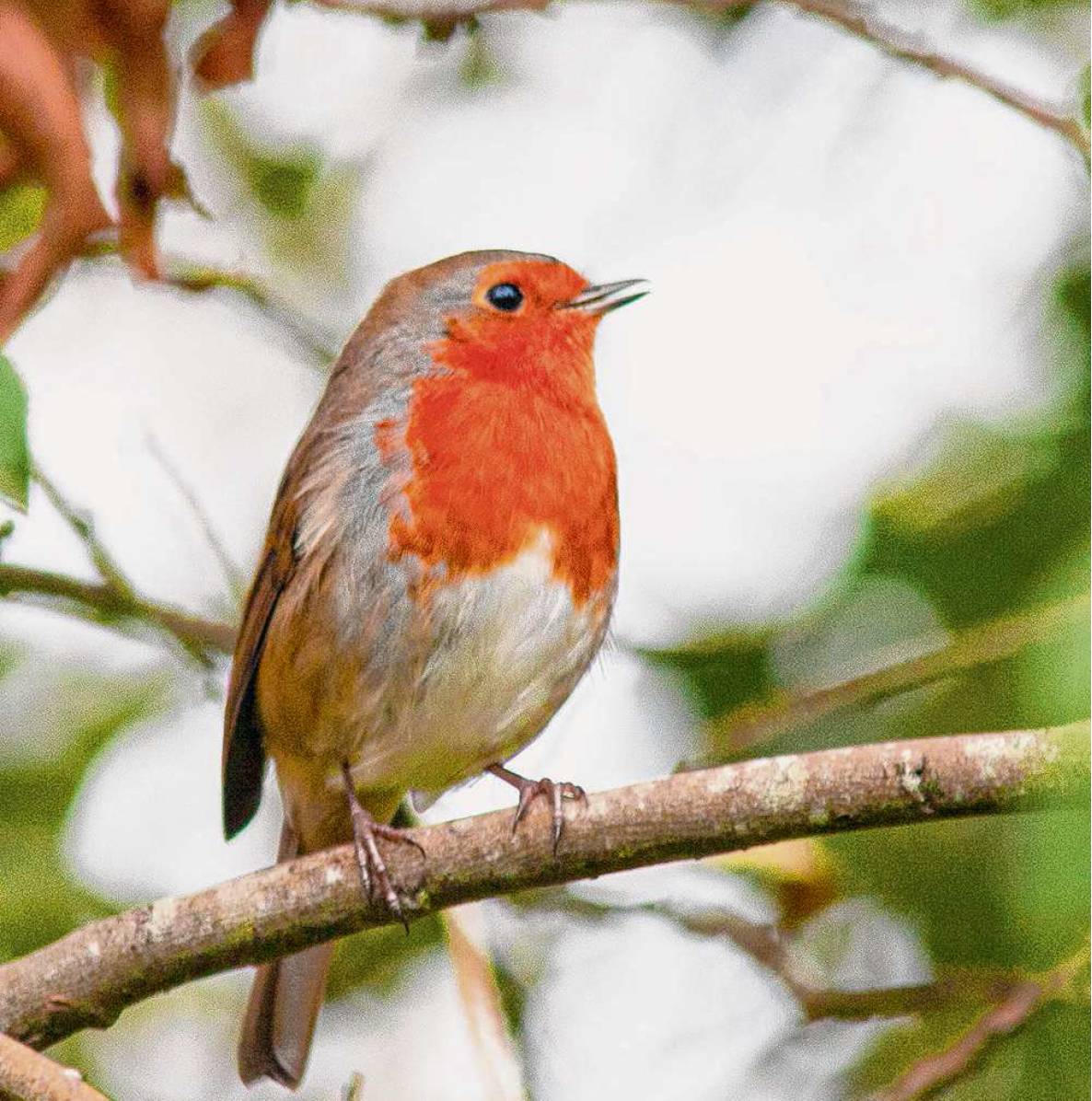NATURE
Robin redbreast shares a special link to Christmas
By Gary Clark CORRESPONDENT
As an old European Christmas story goes, on the cold night when Jesus was born in a Bethlehem stable, Mary cried out that the embers in the stable’s campfire were burning out. Her cries awakened a robin perched on a nearby tree, and the bird flew into the stable to fan the embers with his wings to reignite the warming fire.
Throughout the night, the bird broke off twigs by his perch, tossed them into the fire and fanned the flames with his wings. By morning, flames from the fire had singed the robin’s white breast into a golden red. Ever since, the bird has been called “robin redbreast.”
That Christmas Eve fable of the robin is among my favorite stories; it’s a reminder of our shared connection with birds and the natural world.
The actual name for the “robin redbreast” is European robin. It’s a beautiful little songbird that sings a tuneful, high-pitched, warbling melody, sounding like “twildde-ooo — twidde-eeede — twiddle.”
When I hear the song on a European vacation, it always enlivens me from my jet lag.
But the European robin is not the same species as our American robin. European settlers to the New World gave it the same name because of the bird’s red breast. Who can blame them for naming our robin after their beloved “robin redbreast” from the Old World?
The differences between the two birds include size and breast color. American robins are about the size of blue jays, while European robins are about the size of house sparrows.
And though the European and American birds aren’t even the same species, they are both loved by birders
The American robin’s red breast extends down its belly, but the European robin’s red breast extends up from the throat and around the face and forehead. American robins also have a deep, brick-red breast color that differs from the radiant reddish orange on the breasts of European robins.
And the silvery song of a European robin sharply contrasts with the American robin’s raspy song, which sounds like the words “cheerily, cheer-up, cheer-up, cheerily, cheer-up.”
European robins are flycatchers in the same Muscicapidae bird family as common nightingales and chats of the Old World.
American robins aren’t even robins; they are members of the Turdidae or thrush family, which includes the wood thrush. Ornithologists once considered renaming the American robin the American thrush — that idea was scotched.
Next time we see an American robin, let it remind us of the Christmas legend about the European robin.
Email Gary Clark, author of “Book of Texas Birds,” with photography by Kathy Adams Clark (Texas A&M University Press) at Texasbirder@comcast.net.
